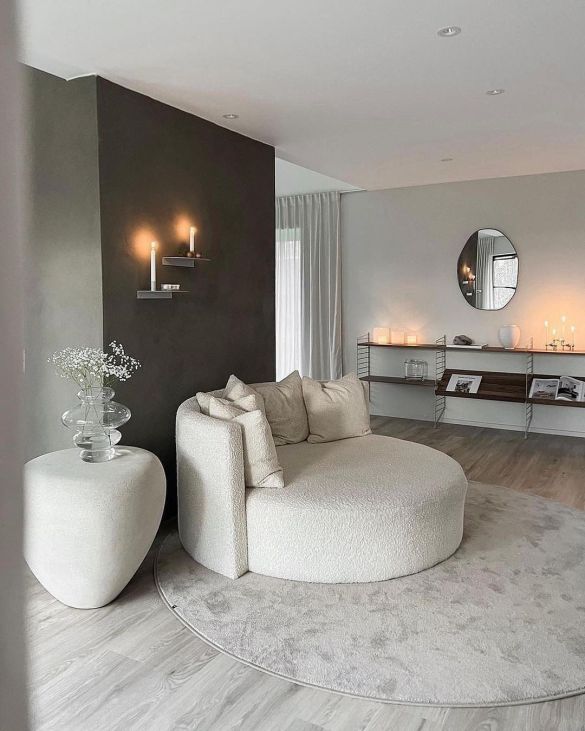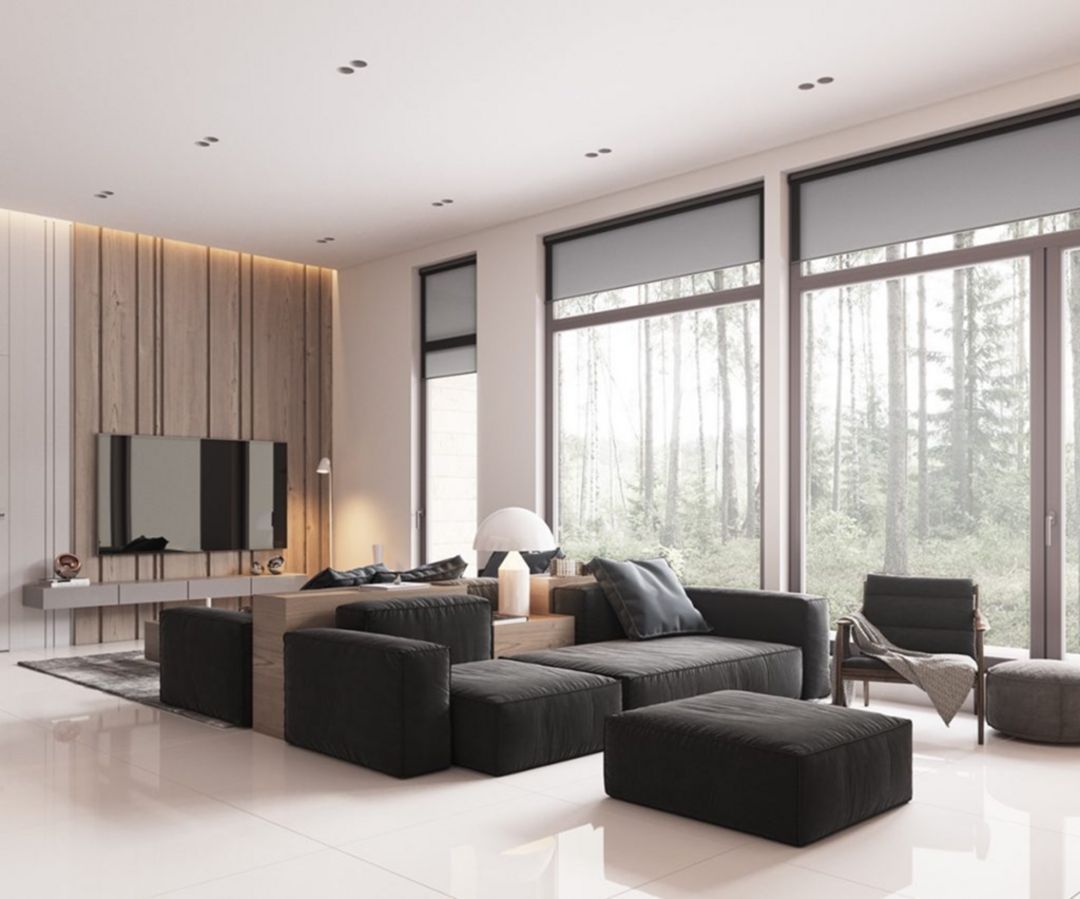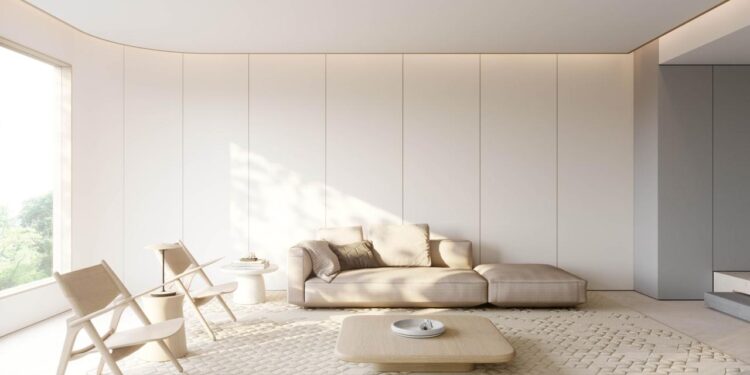Minimalist interior design has captivated homeowners, designers, and architects alike, offering a timeless aesthetic that emphasizes simplicity and functionality. In recent years, this design style has evolved to embrace natural elements, blending the serenity of nature with clean lines and uncluttered spaces. This article explores how minimalist design harmonizes with nature, the key principles behind this movement, and actionable tips to incorporate natural touches into your minimalist home.
The Essence of Minimalist Design
At its core, minimalist design is about stripping away the unnecessary, leaving only the essential. The mantra “less is more” encapsulates its philosophy, prioritizing quality over quantity. Spaces are characterized by open layouts, neutral color palettes, and a focus on functionality. Furniture pieces are purposeful, devoid of excessive ornamentation.
By integrating natural materials and organic forms, minimalist design creates environments that are not only visually soothing but also emotionally uplifting. The combination of simplicity and nature evokes tranquility, allowing inhabitants to feel connected to the outdoors even within interior spaces.
Why Nature Belongs in Minimalism
Incorporating natural elements into minimalist design aligns with the growing desire for wellness-focused living. People are increasingly seeking interiors that promote relaxation, mindfulness, and sustainability. Natural textures and materials foster these qualities by:
A. Providing warmth and softness to otherwise stark interiors.
B. Enhancing sensory experiences through tactile surfaces.
C. Improving air quality and psychological well-being.
D. Connecting inhabitants with the rhythms of the natural world.
Key Natural Elements in Minimalist Interiors
To achieve harmony between minimalism and nature, consider incorporating these core elements:
A. Wood Accents
Wood introduces warmth and organic texture, balancing the clean lines typical of minimalist spaces. Whether through hardwood flooring, exposed beams, or simple wooden furniture, it offers timeless appeal. Opt for light-toned woods like oak, birch, or maple to maintain an airy atmosphere.
B. Stone Features
Stone surfaces bring durability and an earthy aesthetic. Use natural stone for countertops, backsplashes, or accent walls. Materials such as marble, slate, and limestone add subtle visual interest without overwhelming simplicity.
C. Indoor Plants
Greenery introduces life and vibrancy to minimalist interiors. From large statement plants like fiddle leaf figs to small succulents on a windowsill, plants enhance air quality while softening rigid geometries. Keep plant arrangements uncluttered to preserve a minimalist feel.
D. Natural Light
Harnessing natural light is essential in minimalist spaces. Large windows, skylights, and glass doors maximize sunlight, reducing the need for artificial lighting during the day. Light-filtering curtains or sheer blinds maintain brightness without sacrificing privacy.
E. Neutral Earth Tones
Minimalist design often uses neutral colors like white, beige, and gray. To infuse nature, introduce earthy tones such as soft browns, muted greens, and sandy hues. These shades evoke a sense of calm while complementing natural materials.
F. Organic Shapes
While minimalism favors geometric forms, incorporating organic shapes prevents spaces from feeling sterile. Think curved furniture, rounded vases, or free-form sculptures that mimic forms found in nature.
G. Natural Textiles
Linen, cotton, wool, and jute are ideal textiles for minimalist interiors with a natural twist. Use these materials for curtains, rugs, cushions, and throws to add texture without visual clutter.
Practical Tips for Incorporating Nature in Minimalism

Transitioning your home into a minimalist sanctuary infused with nature doesn’t require a complete overhaul. Here are actionable steps:
A. Declutter your space, removing non-essential decor and furnishings.
B. Prioritize quality over quantity when selecting natural materials.
C. Introduce a few statement natural pieces rather than multiple small items.
D. Focus on craftsmanship; choose handmade or artisanal pieces with natural imperfections.
E. Use plants strategically, positioning them where they receive optimal light and enhance spatial flow.
F. Embrace negative space; let your natural elements breathe without crowding.
The Emotional Impact of Natural Minimalism
Minimalist interiors with natural elements foster emotional well-being by reducing sensory overload and creating a calming environment. Studies show that exposure to natural textures and views improves mood, lowers stress, and enhances concentration.
In addition, these spaces support mindfulness by encouraging intentional living. Every item has a purpose, and every design choice reflects a conscious appreciation for simplicity and nature.
Sustainability and Minimalist Natural Design
Minimalist design with natural materials aligns with sustainable living. By choosing renewable, biodegradable, or responsibly sourced materials, homeowners contribute to environmental preservation. This approach promotes longevity over disposability, reducing waste and fostering ethical consumption.
Key sustainable practices include:
A. Selecting reclaimed or recycled wood for furniture and flooring.
B. Using low-VOC paints and natural finishes.
C. Installing energy-efficient windows to optimize natural lighting.
D. Investing in high-quality items designed to last for decades.
E. Supporting local artisans and makers who use sustainable materials.
Challenges and How to Overcome Them
While merging minimalism and natural elements is rewarding, it can present challenges such as:
A. Balancing simplicity with warmth: Avoid sterile environments by layering textures.
B. Budget constraints: Prioritize key investment pieces and gradually build your collection.
C. Maintenance of natural materials: Use protective finishes and proper cleaning methods.
D. Finding authentic materials: Research suppliers for sustainably sourced products.
The Future of Minimalist Natural Design

The trend toward blending minimalism with natural elements shows no signs of slowing down. As people continue to prioritize well-being, sustainability, and simplicity, this design philosophy will evolve with innovative materials and technologies that remain true to nature.
Future directions may include:
A. Biophilic design integration, fostering deeper connections to nature.
B. Smart home features that enhance energy efficiency while preserving minimalist aesthetics.
C. Greater use of regenerative materials like bamboo and cork.
D. Collaborative designs with nature-inspired art and installations.
Conclusion
Minimalist design that embraces natural elements offers more than aesthetic appeal—it fosters well-being, sustainability, and a harmonious living environment. By thoughtfully integrating organic materials, earthy tones, natural light, and greenery, homeowners can create serene spaces that reflect both simplicity and a deep respect for nature.
Whether you’re renovating a single room or reimagining your entire home, remember that every design choice matters. Through mindful selection and intentional design, you can achieve a minimalist sanctuary that brings nature closer to daily life.










